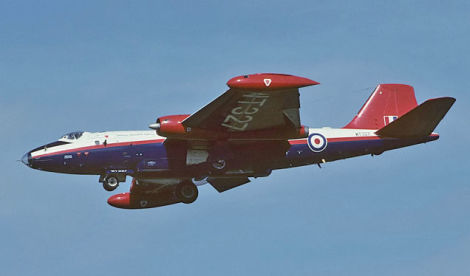Welcome to This Date in Aviation History, getting of you caught up on milestones, important historical events and people in aviation from June 22 through June 25.
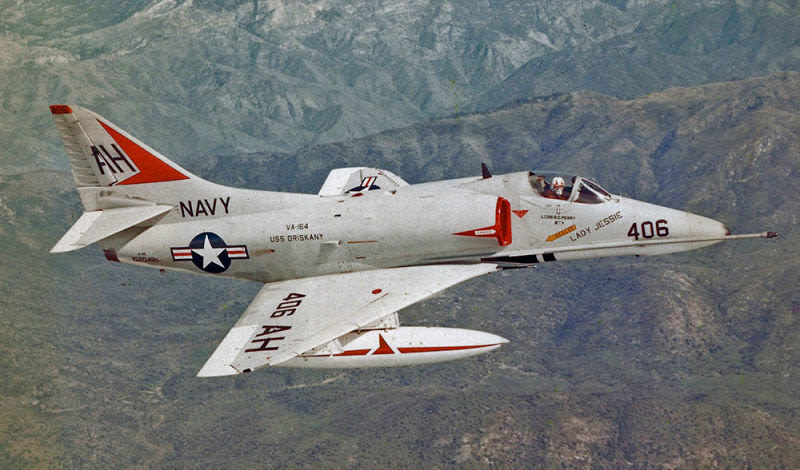
June 22, 1954 – The first flight of the Douglas A-4 Skyhawk. The 1950s was a period of transition for military aviation, as new jet-powered warplanes began to take the place of older, propeller-driven aircraft in increasing numbers. Douglas had provided the US Navy and US Marine Corps with a large number of bombers, fighters, and naval attack aircraft aircraft during WWII, and they followed those up with the remarkable piston-engine attack plane, the AD (A-1) Skyraider, which came too late to take part in the war but served with great distinction in the Korean and Vietnam Wars. Best known as a hard-hitting and rugged ground attack aircraft, the Skyraider came in a host of variants, including one that was modified to carry nuclear weapons, but the Navy requested a jet-powered aircraft to take its place.
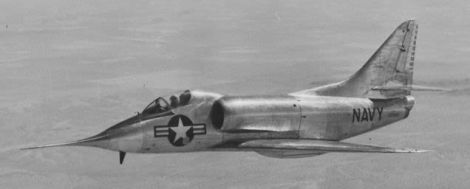
Bucking the trend towards larger and larger aircraft with multiple engines, Douglas engineer Ed Heinemann designed a small, tailed delta wing fighter powered by a single jet engine. In fact, the A4D, later redesignated A-4, was so small that its wings did not need to be folded for carrier storage, and the final aircraft weighed half of what the Navy specified for the new airplane. In fact, the A-4 weighed even less than the Skyraider it replaced. The first A-4s were powered by a Wright J65 turbojet, but starting with the A-4E, Douglas moved to a Pratt & Whitney J52 turbojet that gave the little fighter a top speed of 670 mph. With such a powerful jet engine in its small airframe, the Skyhawk was a favorite among its pilots for its speed and performance, earning it the nicknames Heinemann’s Hot Rod, Bantam Bomber, Mighty Mite and Scooter.
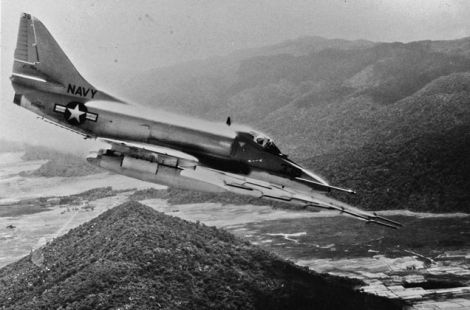
And even though it was small, the Skyhawk packed a heavy punch. In addition to its two 20mm cannons, the A-4 could carry nearly 10,000 pounds of external ordnance, a greater load than a WWII-era Boeing B-17 Flying Fortress strategic bomber. The Skyhawk also pioneered the concept of “buddy refueling,” where one aircraft could refuel another of the same type in flight, removing the need for dedicated tanker aircraft. Following delivery to the Navy and Marine Corps in 1956, the A-4 first saw combat with the Navy during the Vietnam War, launching air raids on North Vietnam in August 1964. Skyhawks also found distinction with the Israeli Air Force in the Yom Kippur War and with the Argentine Air Force during the Falklands War. Other international customers included Kuwait, Australia, New Zealand, Indonesia, Malaysia, and Brazil.

In 1974, the Navy’s Blue Angels demonstration squadron chose the Skyhawk as their new demonstration aircraft when they transitioned from the McDonnell Douglas F-4 Phantom II, a plane that was much larger and more costly to operate. The smaller and lighter aircraft, with a tighter turning radius, allowed for a more dynamic flight demonstration, and the Blues flew the Skyhawk until 1986. After the Skyhawk was retired from US Navy fleet duty, it found a new lease on life as an adversary aircraft at the Navy’s Fighter Weapons School (commonly called Top Gun). The A-4 was chosen as the aggressor aircraft because of its small size, excellent maneuverability, and smokeless trail, similar to a MiG-17, and it served in this role until 1999. The A-4 had a remarkable production run of 25 years, and Douglas turned out nearly 3,000 copies of the diminutive fighter/bomber. The US Navy retired the last of its operational A-4s in 2003, but the Skyhawk served with the Israeli Air Force until 2015, and still remains in service with a handful of export countries.
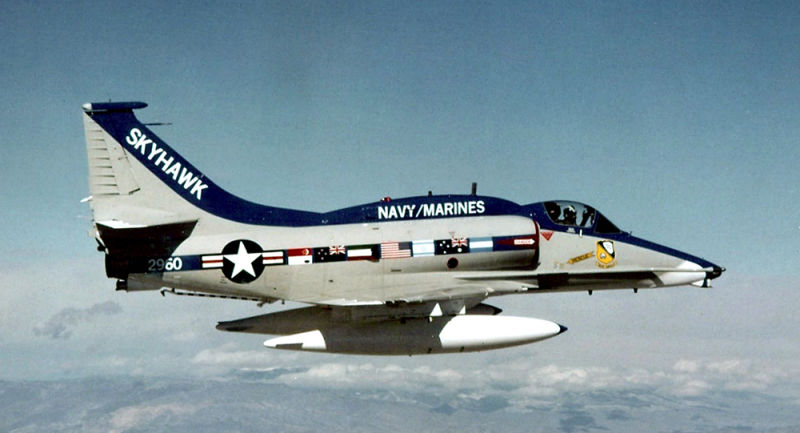
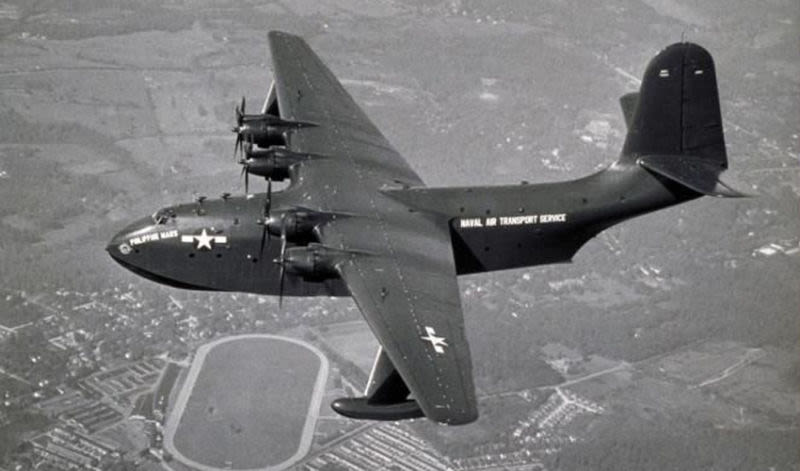
June 23, 1942 – The first flight of the Martin JRM Mars. Today, huge, modern airliners operate from airports the world over, but in the earlier days of aviation, particularly the Golden Age of the 1930s, the world’s largest operational aircraft were flying boats that could take off and land from just about any patch of water large enough to accommodate them. With 71-percent of the Earth’s surface covered by water, flying boats became the preferred way to transport passengers and cargo across the oceans or along the continental seacoasts, with the added safety factor of being able to land just about anywhere along their route in case of emergency or to take on fuel. By WWII, the large flying boat was being supplanted by larger land-based planes, and the age of the flying boat reached its zenith with the huge Martin JRM Mars, the largest flying boat produced for the Allies during the war.

Based on their PBM Mariner, a large two-engined flying boat patrol bomber that first flew in 1939, the Mars was originally conceived as a long-range ocean patrol bomber. Martin scaled up the Mariner by stretching the fuselage 38 feet and adding 82 to its wingspan to measure a full 200 feet across. Where the Mariner had two engines, the Mars boasted four more powerful Wright R-3350 Duplex Cyclone 18-cylinder radial engines that provided a cruising speed of 221 mph and an unrefueled range of nearly 5,000 miles. Though Martin conceived the Mars as a maritime patrol bomber, that mission had become obsolete by the time the aircraft entered service, so the US Navy ordered 20 aircraft to be converted as a strategic transport and cargo aircraft. In that role, the cavernous fuselage could accommodate 133 troops, 84 patients along with 25 medical attendants, or up to 32,000 pounds of cargo.
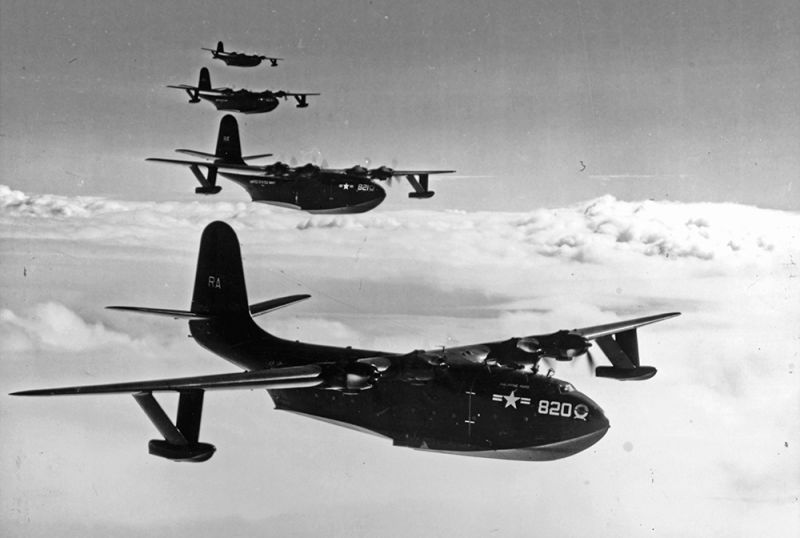
The first of these giant flying boats was delivered in June 1945 but, with the end of the war in sight, the Navy cut their original order of 20 aircraft to just the five aircraft that were under construction at the time. The first pre-production aircraft, named Hawaii Mars, was lost in a crash in the Chesapeake Bay, leaving only the original pre-production aircraft and four others. In a nod to their intended role in the Pacific Theater, each was named after Pacific Ocean locales from the war: the Marianas Mars, Philippine Mars, Marshall Mars, Caroline Mars, and a second Hawaii Mars. The Navy used the aircraft to fly cargo from the US to Hawaii and other islands in the Pacific, and the Caroline Mars, which had been upgraded with more powerful Pratt & Whitney R-4360 Wasp Major 28-cylinder engines, set a world record for passenger load in 1950 when it carried 269 passengers from San Diego to Alameda. Engines fires dogged the development of the Mars, and the Marshall Mars was lost in 1950 following an engine fire that destroyed the plane, leaving only four aircraft.
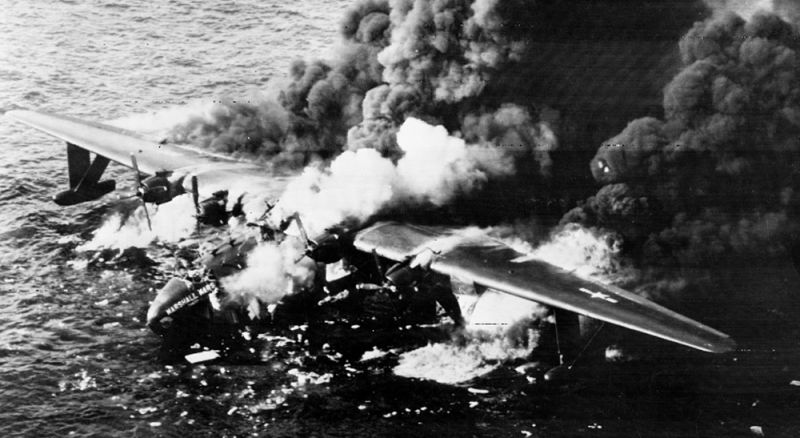
By 1959, the Navy was done with the giant flying boats, and they planned to sell the remaining aircraft for scrap. However, the mammoth planes got a new lease on life when they were purchased by a consortium of Canadian foresters to be converted to firefighting water bombers. Water tanks and pick up scoops were added which allowed 30 tons of water to be taken onboard on just 22 seconds. But fate kept chipping away at the Mars, and the Marianas Mars was lost in a fatal crash in 1961, and the Caroline Mars fell victim to Typhoon Freda in 1962.

That left just two aircraft. In 2012, the owners of the aircraft, Coulson Flying Tankers, restored the Philippine Mars to US Navy livery with the intent of flying it to the National Naval Aviation Museum in Florida where it would be put on display. However, the Canadian government stepped in to keep the aircraft in Canada, and the political fight over its final disposal continues. The Hawaii Mars remains flying, though it is no longer under contract for firefighting duties, and was damaged during an air show appearance in 2016.
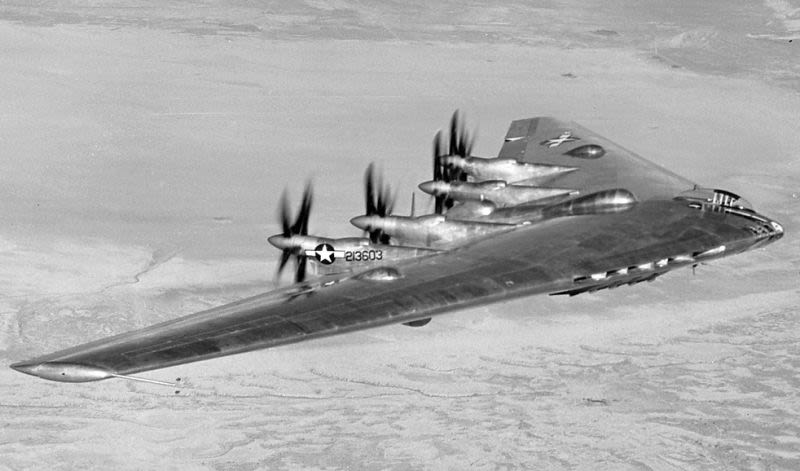
June 25, 1946 – The first flight of the Northrop YB-35. Heavy, strategic bombing reached its heyday during WWII, and some of the greatest technological advances of the era were made in the design of long-range bombers that could carry increasingly heavier payloads at ever greater distances. While work was underway on the Boeing B-29 Stratofortress, arguably the greatest of the piston-powered heavy bombers to come out of the war, the US Army Air Corps issued a request to the aviation industry for a new bomber that would be capable of reaching occupied Europe in the event that Britain fell to the Nazis. The bomber would need to be capable of carrying 10,000 pounds of bombs on a round-trip mission of 10,000 miles, with a maximum speed of 450 mph and a service ceiling of 45,000 feet.

Both Boeing and Consolidated responded, with Consolidated offering the B-36 Peacemaker, a huge six-engine bomber wouldn’t be ready for service until after the war. Northrop was eventually included in the competition, but Jack Northrop took a more radical approach, hoping to extend the range and payload of their bomber by making it as aerodynamically efficient as possible. Since any part of an aircraft that moves through the air produces drag, Northrop believed that the best way to reduce drag was to eliminate the fuselage, tail, and any other parts of the plane that didn’t generate lift. The result of this design concept was a plane that was no more than a flying wing. The center section of the wing contained the cockpit and crew quarters, including bunks for off-duty pilots on long missions. A large, protruding tail cone housed the targeting equipment along with defensive machine guns. In all, Northrop planned for 20 machine guns or cannons housed in six turrets.
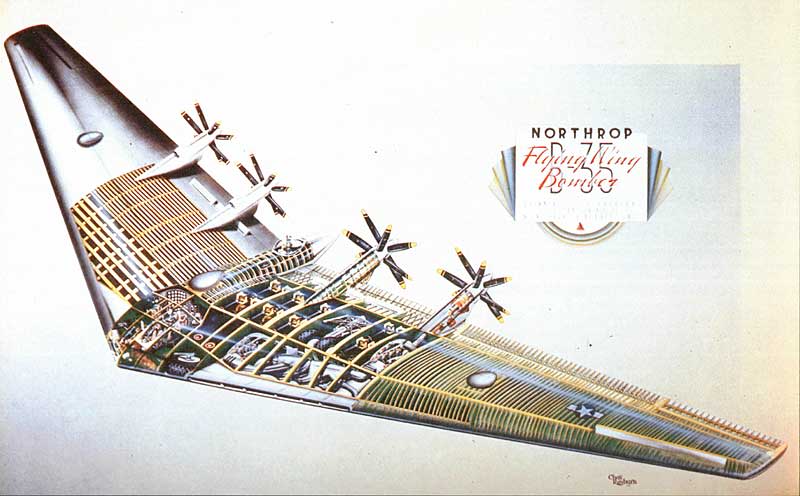
Since the flying wing was such a radical departure from traditional design, Northrop first developed the Northrop N-9M, a twin-engine, one-third scale flying wing which was used to gather data on flight characteristics of the design and also to act as a trainer for the YB-35 pilots. The full-sized YB-35 was powered by four Pratt & Whitney R-4360 Wasp Major radial engines each turning a contra-rotating propeller. The engines and propellers were supplied, untested, by the US Army, and they soon displayed significant vibration issues which proved to be so severe that Jack Northrop grounded the bomber until the problems could be fixed. Even though the YB-35 had greater range than the B-36, the Air Force deemed propeller engines obsolete by the late 1940s and ordered that Northrop modify the YB-35 to be fitted instead with eight turbojet engines, leading to the flying wing’s reclassification as the YB-49. The jet engines gave the bomber the flight performance the Air Force desired, but the range was cut nearly in half, and the flying wing no longer had the capability to reach overseas targets from the US. It also proved very difficult to fly. Though the Air Force had originally contracted for 200 YB-35 bombers, only 13 were built, and only one ever flew. After testing proved its airworthiness, the innovative bomber was parked for more than a year before being scrapped in 1949. Two of the airframes were converted to the YB-49, one of which crashed. All the remaining airframes were scrapped.
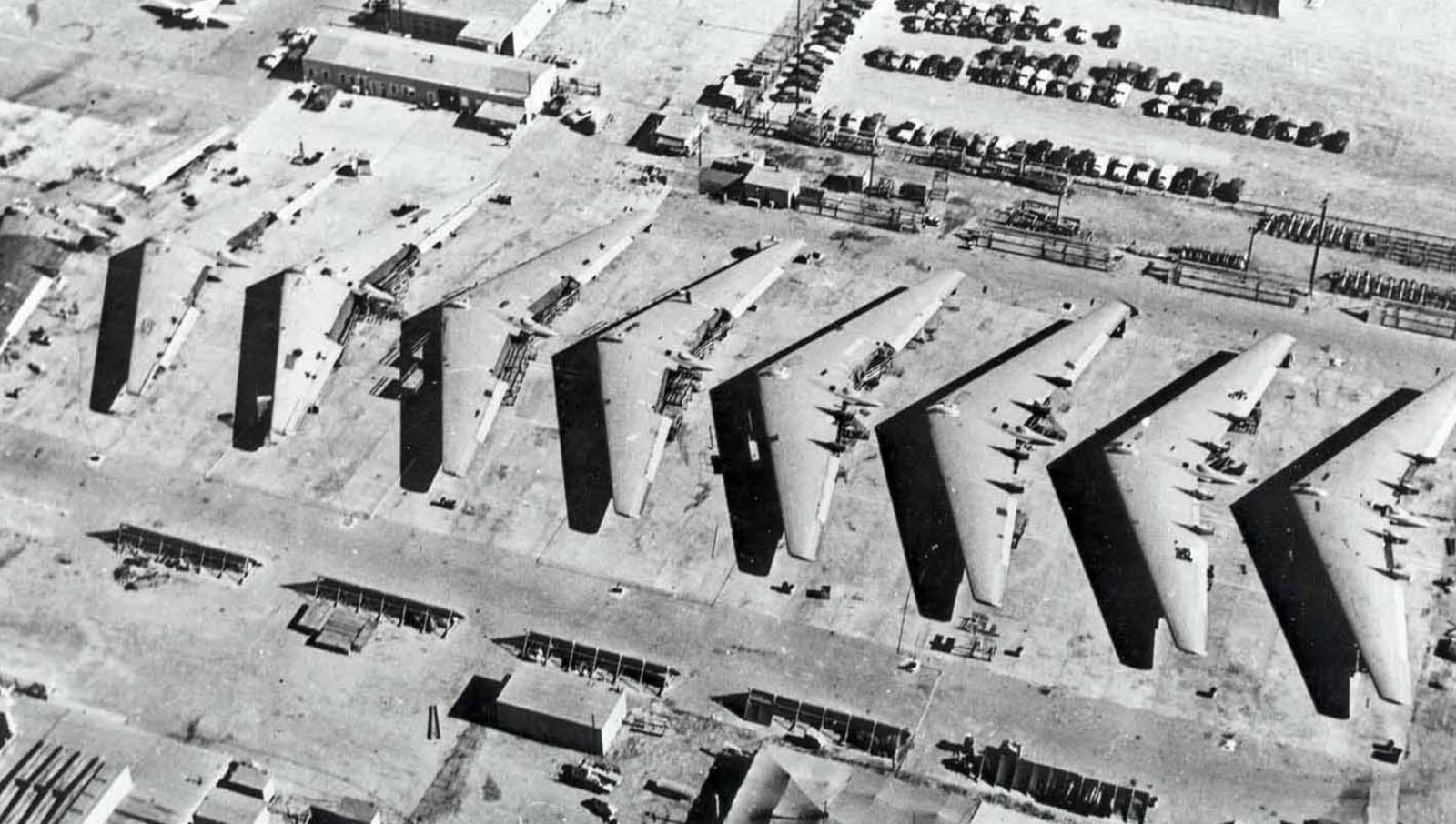
While Jack Northrop was convinced that it was a political conspiracy that ended the flying wings, it was was also likely a case of an idea that was simply too far ahead of its time. In 1981, when Northrop was frail and near death, the Northrop Grumman team working on the B-2 Spirit flying wing bomber brought him to the factory and showed him the plans and a scale model of the B-2 at a time when the project was still top secret. Northrop’s poor health had left him unable to speak, but he reportedly wrote on a piece of paper, “Now I know why God has kept me alive for 25 years.” He died 10 months later, perhaps feeling vindicated for his unyielding belief that his flying wing would one day become a reality.
Short Takeoff
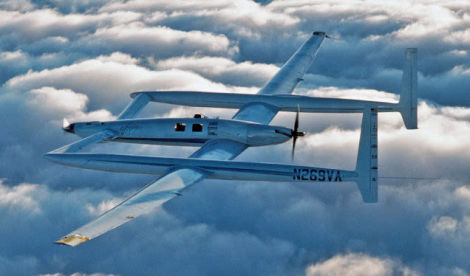
June 22, 1984 – The first flight of the Rutan Voyager, the first aircraft capable of flying around the world without refueling. The idea to build the world-spanning aircraft was initiated by pilots Jeana Yeager and Dick Rutan, along with famed aeronautical engineer Burt Rutan, and the aircraft was built by Burt Rutan’s company Scaled Composites. The Voyager airframe was constructed from fiberglass, carbon fiber and Kevlar, weighed just 939 pounds empty (engines and fuel brought the weight to 9,700 pounds), and was powered by a pair of Lycoming engines in a push-pull configuration. Yeager and Dick Rutan departed from Edwards Air Force Base in California on December 14, 1986 and completed the circumnavigation on December 23 after flying 26,366 miles and setting a flight endurance record of just over nine days. The Voyager is now on display at the Smithsonian Air and Space Museum in Washington, DC.
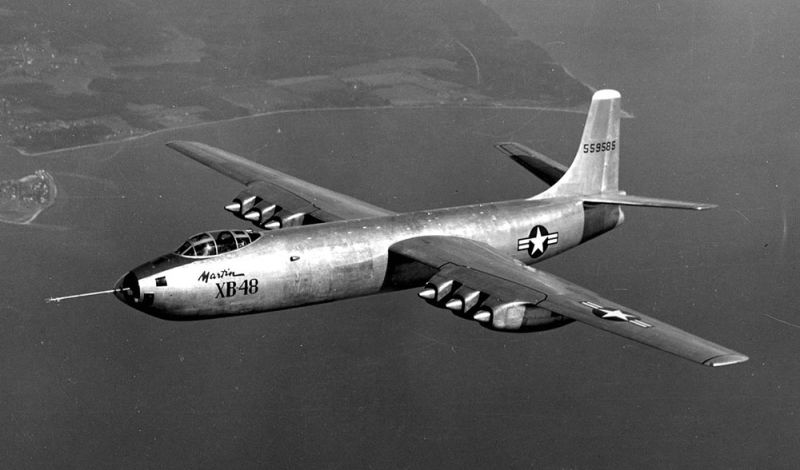
June 22, 1947 – The first flight of the Martin XB-48, a six-engined, straight-winged bomber that was developed alongside the swept-wing Boeing B-47 Stratojet as a fallback should the Boeing bomber prove unsuccessful. Displaying its design lineage with the piston-powered Martin B-26 Marauder, the XB-48 was the first jet bomber to employ a bicycle undercarriage with outriggers on the wings, an arrangement that had been tested on a modified B-26. Along with the B-47, the XB-48 competed with the North American XB-45 Tornado and the Convair XB-46, with only the Tornado selected for limited production. Only two XB-48s were built before the program was canceled in 1948.
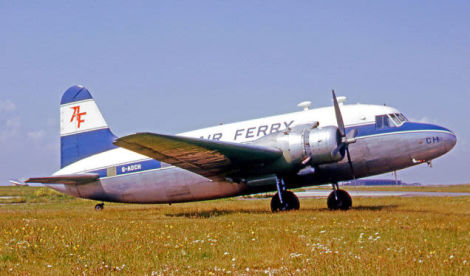
June 22, 1945 – The first flight of the Vickers VC.1 Viking, a twin-engine airliner developed from the Vickers Wellington bomber. Following WWII, Britain worked to create a civilian airline service after focusing almost solely on military aircraft production during the war. The Viking used the wing and undercarriage of the Wellington, but the fuselage was entirely new and designed to carry 21 passengers. The airliner was introduced in 1946, and British European Airways (BEA) operated the Viking for eight years before it was replaced by more modern pressurized airliners. One Viking was modified by the addition of two Rolls-Royce Nene turbojets and became the world’s first purely jet-powered airliner when it flew in 1948. A total of 163 Vikings were built.
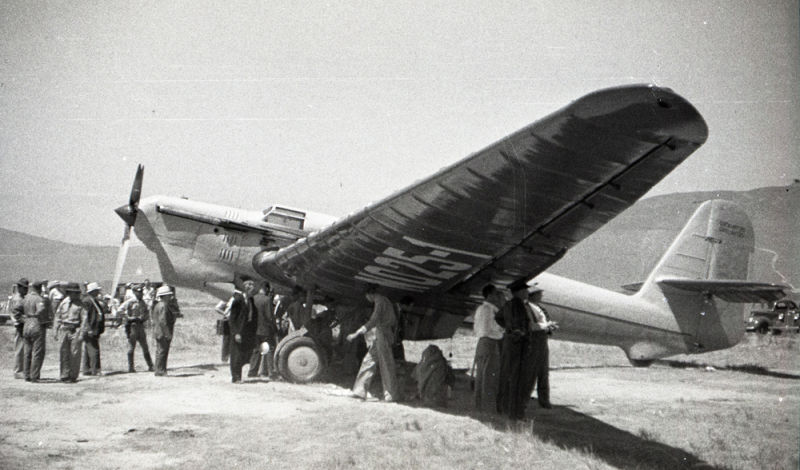
June 22, 1933 – The first flight of the Tupolev ANT-25, a long-range aircraft developed by Pavel Sukhoi, under the supervision of Andrei Tupolev, and built by the Central Aerohydrodynamic Institute (TsAGI). The ANT-25 was powered by a single Mikulin M-34 12-cylinder engine, and the aircraft featured a very long wing for efficient fight. The large wing also housed enormous fuel tanks which held more than 13,000 pounds of fuel. The ANT-25 made numerous record-breaking flights, including a non-stop flight from Moscow across the North Pole to the United States. The planned destination was San Francisco, but a fuel shortage required the crew to land in Vancouver. Nevertheless, the 63-hour flight covered a total of 5,670 miles. A subsequent flight covered a distance of 7,100 miles from Moscow to San Jacinto, California. Plans to convert the aircraft into a bomber did not materialize. Three variants were produced, and a replica is on display at the Monino aviation museum.
June 23, 2006 – The RAF retires the English Electric Canberra. Originally conceived as a jet-powered successor to the de Havilland Mosquito, the Canberra was one of the most successful of the early jet-powered bombers of the 1950s. It was capable of flying higher than most fighters when it was introduced, and was an important part of England’s early nuclear strike force. The Canberra proved to be remarkably adaptable to different missions, and its retirement marked the end of more than 50 years of RAF service. The Canberra was also built under license in the US as the Martin B-57 Canberra, and it became the first American jet-powered bomber to drop bombs in battle during the Korean War. Three of the Martin-built aircraft remain in service with NASA, where they are used to carry out high-altitude research.
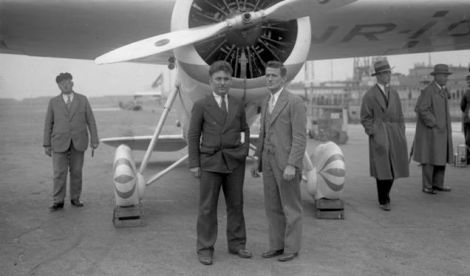
June 23, 1931 – Wiley Post and Harold Gatty take off on a flight around the world. While others had flown fixed wing aircraft around the world before, the record for the shortest circumnavigation was held by the airship Graf Zeppelin, which completed the journey in 21 days in 1929. Post, with Gatty acting as navigator, departed from Roosevelt Field on Long Island flying a Lockheed Vega named Winnie Mae and headed eastward. They completed the flight on July 1 after traveling 15,474 miles in a record time of 8-and-a-half days. They were hailed as heroes in the US, and received a ticker tape parade in New York City. Post wrote a chronicle of their journey titled Around the World in Eight Days.
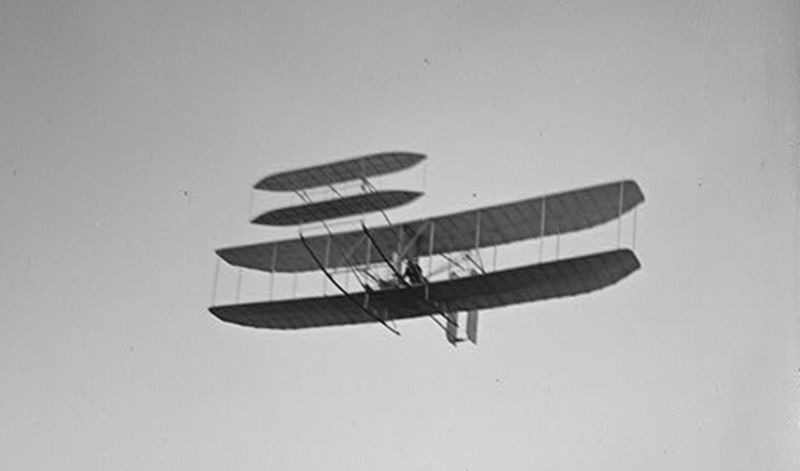
June 23, 1905 – The first flight of the Wright Flyer III. Following the historic first powered flight on December 17, 1903 with the original Wright Flyer, the Wright Brothers worked to refine their flying machine and improve on its reliability, handling, and performance. They followed the first Flyer with the Wright Flyer II, which introduced a more powerful engine but less efficient wing, then developed the Wright Flyer III which featured enlarged control surfaces, refined controls, and eventually upright seating for a pilot and passenger. With the Flyer III, the brothers began to make ever longer flights, including one flight which circled the Huffman Prairie outside Dayton, Ohio for nearly 40 minutes and covered a distance of 24 miles.
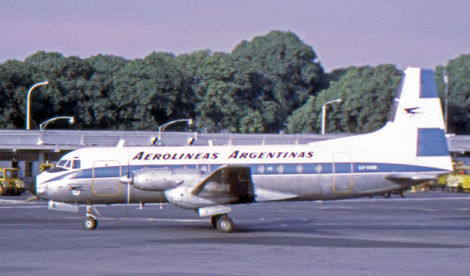
June 24, 1960 – The first flight of the Hawker Siddeley HS 748, a turboprop-powered airliner originally developed by Avro to replace the Douglas DC-3. Designed for short takeoff and landing (STOL) and the ability to operate from rough, unpaved airfields, the HS 748 was envisioned as a smaller competitor to the four-engine Vickers Viscount and was capable of accommodating up to 40 passengers. The two Rolls-Royce Dart engines gave the HS 748 a cruising speed of 281 mph, and subsequent variants allowed for up to 58 passengers. A total of 380 were produced between 1961-1988, and roughly 20 remain in service today.
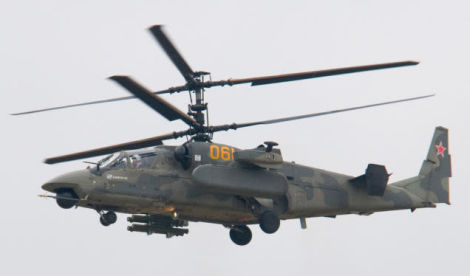
June 25, 1997 – The first flight of the Kamov Ka-52 Alligator, a two-seat variant of the Kamov Ka-50 attack helicopter. Following tests that compared the single-seat Ka-50 and the existing Mil Mi-28 gunship, Kamov determined that it would be cheaper to develop their existing helicopter into a more capable ground attack and reconnaissance helicopter than create a new one. The second crew member, seated beside the pilot, operates the the radar and targeting equipment, leaving the pilot free to fly the aircraft. Production began in 1996, and 80 have been built to date. The Alligator has seen action as recently as 2015 during Russia’s support of the Syrian government in the ongoing Syrian Civil War.
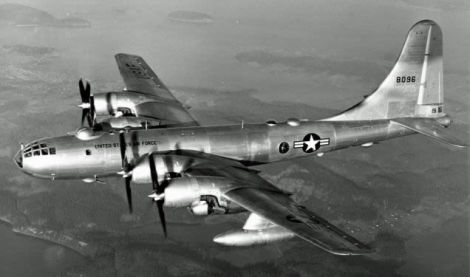
June 25, 1947 – The first flight of the Boeing B-50 Superfortress, an upgraded variant of the Boeing B-29 Superfortress that was fitted with more powerful engines, a lengthened fuselage, an enlarged stabilizer, and was constructed from a lighter aluminum alloy to save weight. The B-50 was never used as a bomber, but the RB-50 reconnaissance variant was flown extensively to probe the northern reaches of the Soviet Union during the Cold War, and the KB-50 tanker variant served as an early aerial refueling platform, eventually receiving a pair of General Electric J47 turbojet engines to help it keep pace with faster jet fighters. Following the introduction of the Boeing B-47 Stratojet and B-52 Stratofortress, the B-50 was retired in 1965.
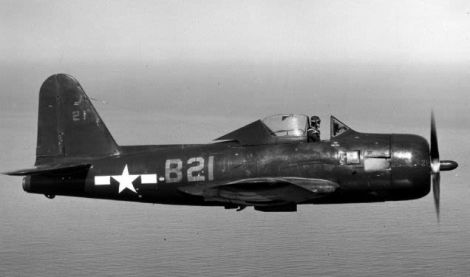
June 25, 1944 – The first flight of the Ryan FR Fireball, a mixed-propulsion fighter that was powered by a Wright R-1820 Cyclone radial engine in the front and a General Electric J31 turbojet in the rear. The fuselage ultimately proved too weak for carrier operations despite modifications to strengthen it, and production of the unfortunately-named Fireball was canceled with the end of WWII after only 66 aircraft were built. The Fireball is notable as the first jet-powered aircraft to land on a carrier, but that was only because its radial engine had failed in flight. By August 1947, all Fireballs were removed from service and most were scrapped. Only one remains, and is on display at the Planes of Fame Air Museum in California.
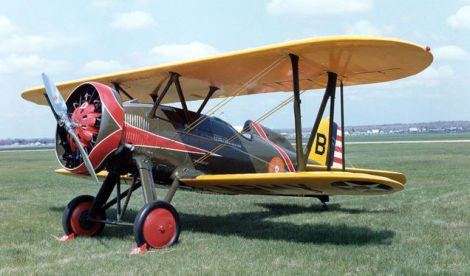
June 25, 1928 – The first flight of the Boeing P-12, the last biplane fighter developed by Boeing. The P-12 was intended as a replacement for the Boeing F2B and F3B fighters built for the US Navy, and its use of corrugated aluminum control surfaces and fabric-covered aluminum tube fuselage meant that it was faster and more nimble than its predecessors, even though it used the same Pratt & Whitney R-1340 Wasp radial engine. Known as the F4B in US Navy service, the P-12 entered service in 1930 and was flown by frontline fighter pursuit groups until 1935, when it was replaced by the all-metal Boeing P-26 Peashooter monoplane. The US Army flew a total of 366 P-12s, while 187 F4Bs served the Navy. Four were built for civilian customers, one of which was purchased by Howard Hughes.
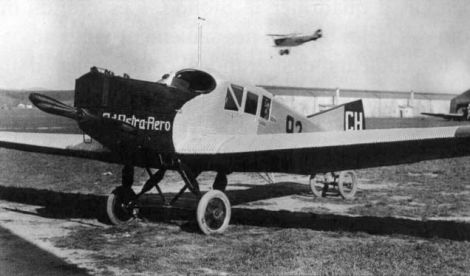
June 25, 1919 – The first flight of the Junkers F.13, the world’s first all-metal transport aircraft. German aircraft designer Hugo Junkers pioneered the use of corrugated duralumin airplane skins, and his unbraced monoplane design was well ahead of other fabric-covered biplanes of the era. The F.13 carried four passengers in an enclosed, heated cabin and also had an enclosed cockpit. Junkers sold his aircraft abroad, and some were built under license in the US and flown by the US Post Office Department. Others were converted to float planes. To sell more aircraft, Junkers started his own airline, Junkers Luftverkehr in 1921. A total of 332 F.13s were built between 1919-1932, and four remain today in museums, with a fifth currently undergoing restoration.
Connecting Flights
If you enjoy these Aviation History posts, please let me know in the comments. And if you missed any of the past articles, you can find them all at Planelopnik History. You can also find more stories about aviation, aviators and airplane oddities at Wingspan.
